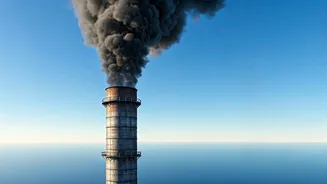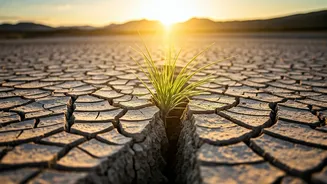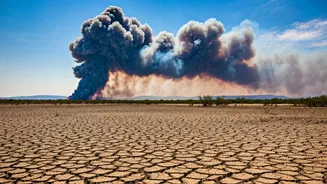A Concerning Milestone
Scientists have determined that atmospheric carbon dioxide (CO2) levels recently reached 424 parts per million (PPM). This marks the biggest yearly jump
ever recorded. This substantial increase in CO2 levels highlights the continuing challenge of addressing climate change and its far-reaching consequences. This significant increase underlines the urgency for global action to curtail emissions and transition towards more sustainable practices.
Understanding the Spike
The rise in CO2 levels is primarily attributable to human activities. These include the burning of fossil fuels for energy, deforestation, and industrial processes. The continuous emission of greenhouse gases like CO2 traps heat in the atmosphere, leading to global warming and climate change. Furthermore, the rate at which CO2 is accumulating in the atmosphere underscores the need for accelerated action to reduce emissions and shift to renewable energy sources.
Impacts and Implications
The increase in CO2 concentration directly affects the Earth's climate. The rise in greenhouse gases results in higher global temperatures, altered weather patterns, and more frequent extreme weather events. These effects encompass rising sea levels, ocean acidification, and disruptions to ecosystems. The repercussions of these changes are broad and touch every element of life on Earth, necessitating immediate and comprehensive strategies to alleviate these impacts.
Future Outlook
If carbon dioxide levels continue to surge, the long-term repercussions could be devastating. Efforts to limit the increase in global temperature to 1.5 degrees Celsius above pre-industrial levels would be difficult to achieve. This requires swift and coordinated international efforts to mitigate climate change. This includes adopting stringent emissions reduction targets, investing in renewable energy technologies, and fostering sustainable practices across all sectors of the global economy.
The Road Ahead
Addressing the rising atmospheric CO2 levels requires a multifaceted strategy. It involves a global transition away from fossil fuels, the promotion of energy-efficient practices, and the large-scale implementation of carbon capture technologies. International cooperation, stringent environmental regulations, and financial incentives are essential to stimulate this transformation. Only through collaborative and decisive action can we lessen the impacts of climate change and secure a sustainable future for the planet.















